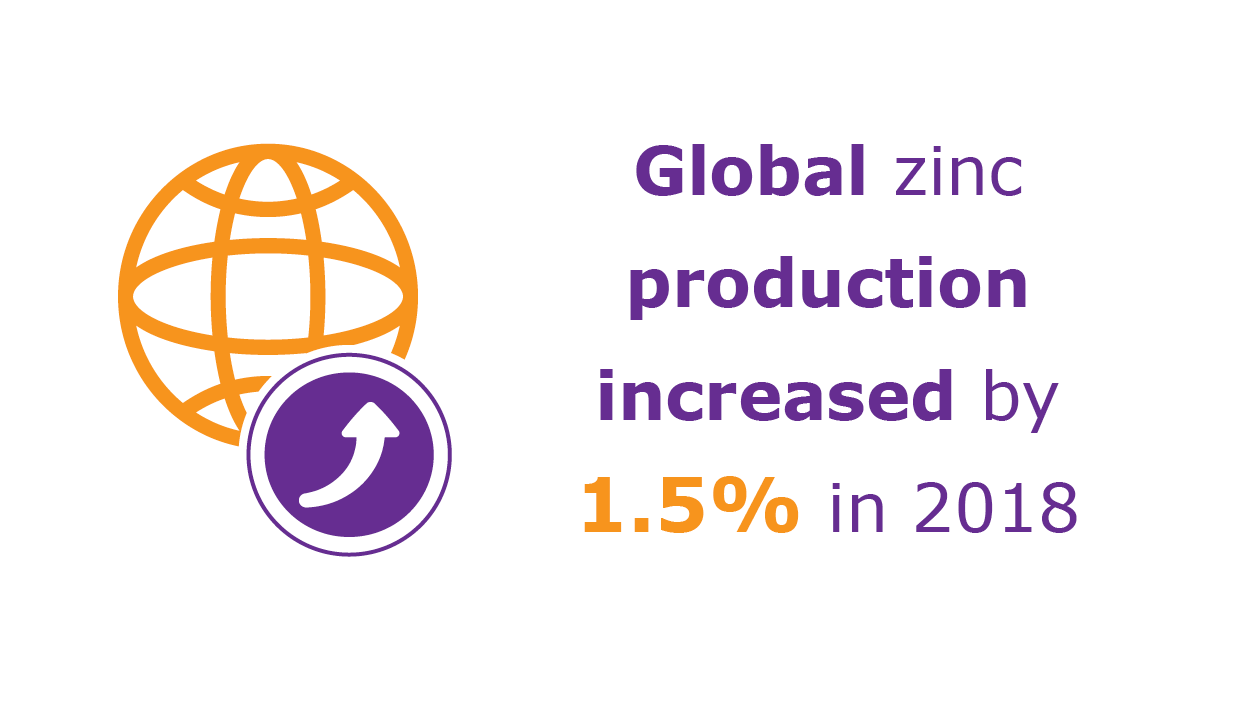Gamsberg in the Northern Cape has been one of the most anticipated mining projects in South Africa for several decades. Over the past 40 years it has been an asset owned by three mining houses – O’okiep Copper Company, Anglo American and Gold Fields – but up until Vedanta Resources bought it in 2010 it has remained unexploited, which is rather odd given that it is one of the largest untapped zinc deposits in the world.
Deshnee Naidoo, CEO of Vedanta Zinc International, which is a grouping of the zinc assets, in Southern Africa and Ireland, of Vedanta Limited (a listed subsidiary of Vedanta Resources plc), says the reason that this project was not implemented – up to this point that is – was because it was previously designed as a ‘mega-mine’ that would produce 10 million tons of ore and 450 000 tons of zinc metal in concentrate a year.
‘Our take, and one of the first things we did, was to scale that down to a modular approach, starting with 4 million tons of ore and 250 000 tons of zinc metal in concentrate output a year,’ she says. Another reason for the lack of development is that Gamsberg’s zinc ore deposit has a high manganese content, making downstream processing into zinc metal difficult. Fortunately another Vedanta Zinc International entity, Skorpion Zinc located in southern Namibia, has a refinery capable of treating zinc with a high-manganese concentrate. In addition, given that the current life-of-mine at Skorpion is approaching its end within the next three years, trucking the high-manganese concentrate from Gamsberg to Skorpion about 400 km away extends the life of the refinery together with providing a solution for the treatment and refining of a portion of the Gamsberg concentrate.
However, a further challenge remained. The ore at Gamsberg is sulphide-based, while the ore at Skorpion is oxide-based. To solve this problem, Vedanta must convert the refinery at Skorpion Zinc to co-treat both sulphides and oxides. Vedanta will also be building a concentrator at Gamsberg. The Gamsberg project involves the development, construction and commissioning of a 4 Mtpa (ROM) open-pit zinc mine, concentrator and associated infrastructure. The project has a construction period of just under three years with first ore production targeted for 2018.
Vedanta Zinc International’s other asset, the Lisheen mine in Ireland, is ramping down and will cease production in Novem-ber this year but Naidoo says they will continue to explore for zinc in Ireland.
‘We’re not just building a project, we are building a community. Our projects must showcase how mining and sustainability can come together’
As the second-largest zinc mine in Europe with over a decade of production, Lisheen has contributed significantly to global zinc production, which currently is around 13 million tons a year.
‘From our perspective Gamsberg will partly replace the production lost from closing Lisheen. The next two years will see a reduction of some 1.5 million tons of global zinc production each year because there are a number of zinc mines reaching the end of their useful lifespans during this period,’ says Naidoo. ‘There are also very few projected greenfield projects other than Gamsberg, which makes zinc a very attractive commodity.’
Naidoo, who joined the company last year, thinks dynamically about the possibilities of mining. While some minerals take a price knock and many economies are struggling, she is focused on building a project during the downturn.
‘From an efficiency perspective, we shaved 10% from the total cost of the Gamsberg project to date. Our current cash needs are to support the equity portion of our project and despite a depressed market, it is very clear in my mind that now is the right time to build.’
It’s also been the right time to recruit. Naidoo says she has been able to cherry- pick her executive team who are all highly talented individuals.
‘We all agree that we don’t look at a project’s active lifespan, [which is] generally around 12 years. Instead we are focused on envisaging what the region we operate in will look like in 50 years.’
The thinking behind this does not only incorporate the usual compliance with environmentally or socially responsible mining activities but Vedanta’s life after mine vision.
‘We’re not just building a project, we are building a community,’ says Naidoo. ‘Our projects must showcase how mining and sustainability can come together. Our mining activity in Southern Africa falls within a global biodiversity hot spot. Our consideration goes largely to succulents and other flora and fauna, which are either restricted, unique or endemic to the region.
‘We discovered that there are 400 species of threatened succulents on-site, 16 of which are endemic. We partnered with the Inter- national Union of Conservation of Nature [IUCN], a non-government organisation that helps the world find pragmatic solutions to its most pressing environmental and development challenges. IUCN is assisting us to not just develop a biodiversity plan for our sites, but to monitor them as well.
‘Our simple philosophy is that where we can, we will avoid working on an area that is ecologically sensitive.
‘Where we can’t avoid environmental impact totally we minimise it, for example by translocating plants from the area to a nursery managed by the company with the future prospect of rehabilitation.’
‘We don’t look at a project’s active lifespan. Instead we are focused on envisaging what the region we operate in will look like in 50 years’
The on-site nursery more than over caters for threatened species. To ensure a high survival rate, Vedanta is translocating up to 10 times more plants than required.
Vedanta has also signed what is believed to be the first offset agreement of its kind with the Department of Environmental Affairs and Nature Conservation. Implementation of this agreement will deliver ‘no net loss’ for various ecological/biodiversity features at Gamsberg.
Collaborating with experts in this way is considered crucial by Vedanta. Similarly, social responsibility is at the heart of what the company does, says Naidoo. ‘Mining activities usually take place in remote, undeveloped areas and this means bringing people to a project area and providing the necessary infrastructure for them.
‘We look at the sustainability and livelihood aspects of this type of migration, particularly regarding the role of SMEs and related development projects. This has to be balanced very carefully because you need to be aware of people wanting too much too quickly. With growth there are possible negative elements that crop up in communities so we have put together a task team with the Northern Cape provincial government to look at how we can better manage the influx of people, put controls in place and help to establish what type of SMEs would be effective.’
Naidoo is pro entrepreneurship, which is in accord with Vedanta’s values. ‘Bringing new people to a region is also somewhat of a challenge but I am very committed to making sure that labour is sourced from the local area.
‘What I do find is that the skills levels are not what they should be. This means we have to identify those weaknesses and work with strategic partners to ensure we upscale our workforce.’
Geographies are always a challenge with mining. Several ghost towns exist across the Northern Cape and Namibia, the result of former copper and diamond mining and this is something Vedanta wishes to avoid.
‘The Northern Cape government departments are willing to work in partnership with us to build the required infrastructure to support new communities,’ says Naidoo.
‘Most of the infrastructure development will be 40 km to 50 km from the mining sites. Bear in mind that the average zinc mine’s lifespan is around 15 to 20 years, but in Gamsberg’s case it can continue for up to 30 years. The government therefore is looking to create a regional strategy that will ensure the sustainability of existing towns.
‘Gamsberg is just 40 km from Pofadder and 120 km from Springbok, so instead of creating a new town, existing infrastructure will be upgraded.’
Developing a zinc mining operation such as Gamsberg can take up to five years in preparing for production. The first three to four years are focused on removing waste to expose the ore. Naidoo has taken a very disciplined approach to capital expenditure.
‘I only develop a project if I can generate the cash required out of the existing operation to support the capital programme.
‘This means that if we can produce ore from Gamsberg and we can move it over to the current plant at Black Mountain and treat it there, I could delay building the concentrator plant at Gamsberg for as long as possible. The challenging economic environment we are currently faced with as an industry means taking a very disciplined modular approach.
‘Coming into the role of CEO at a time when there is the development of a mine and a closure of one is more than I ever hoped for. The timing and the opportunities have all come together very neatly for the making of both a personal and professional success story.’






